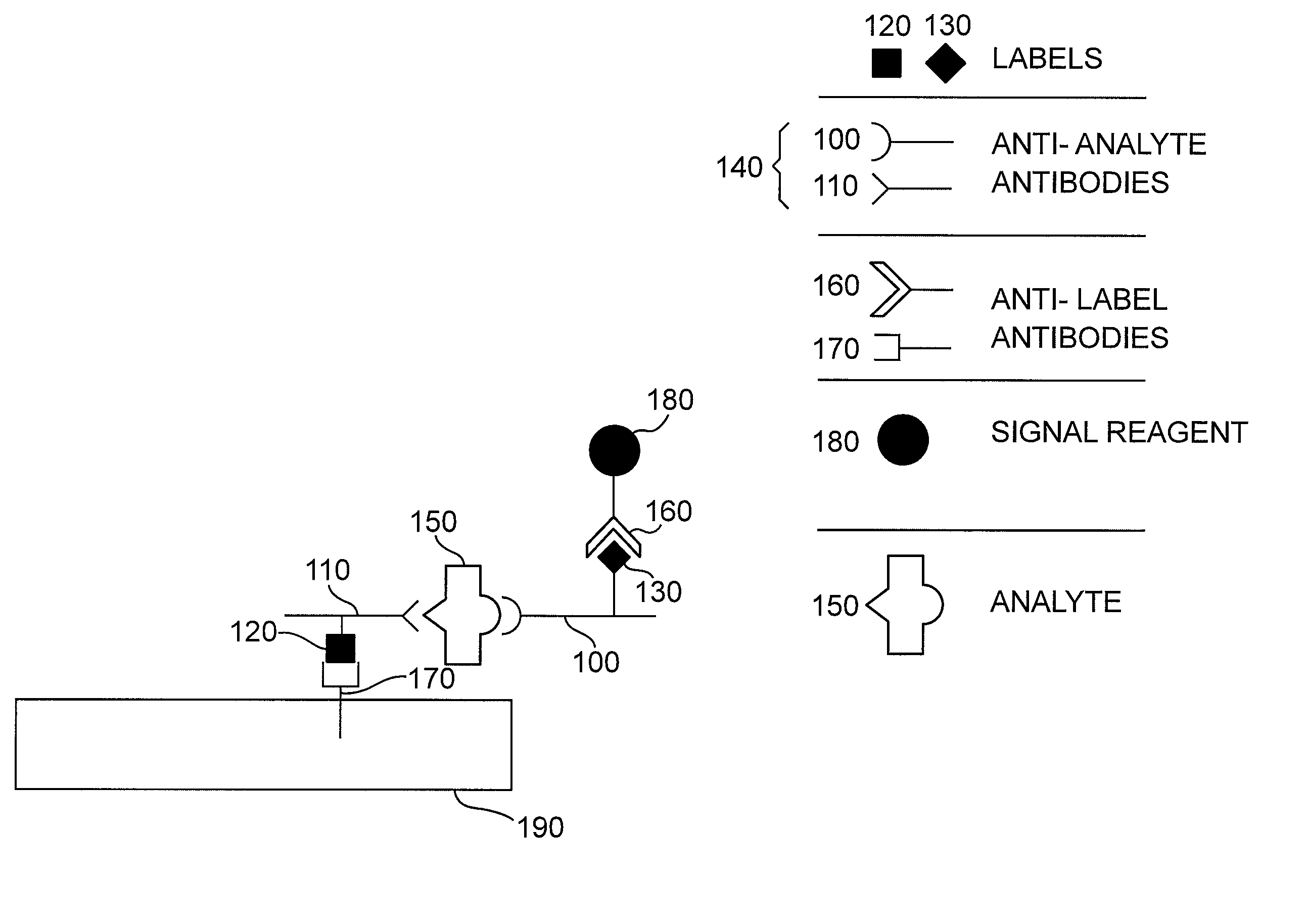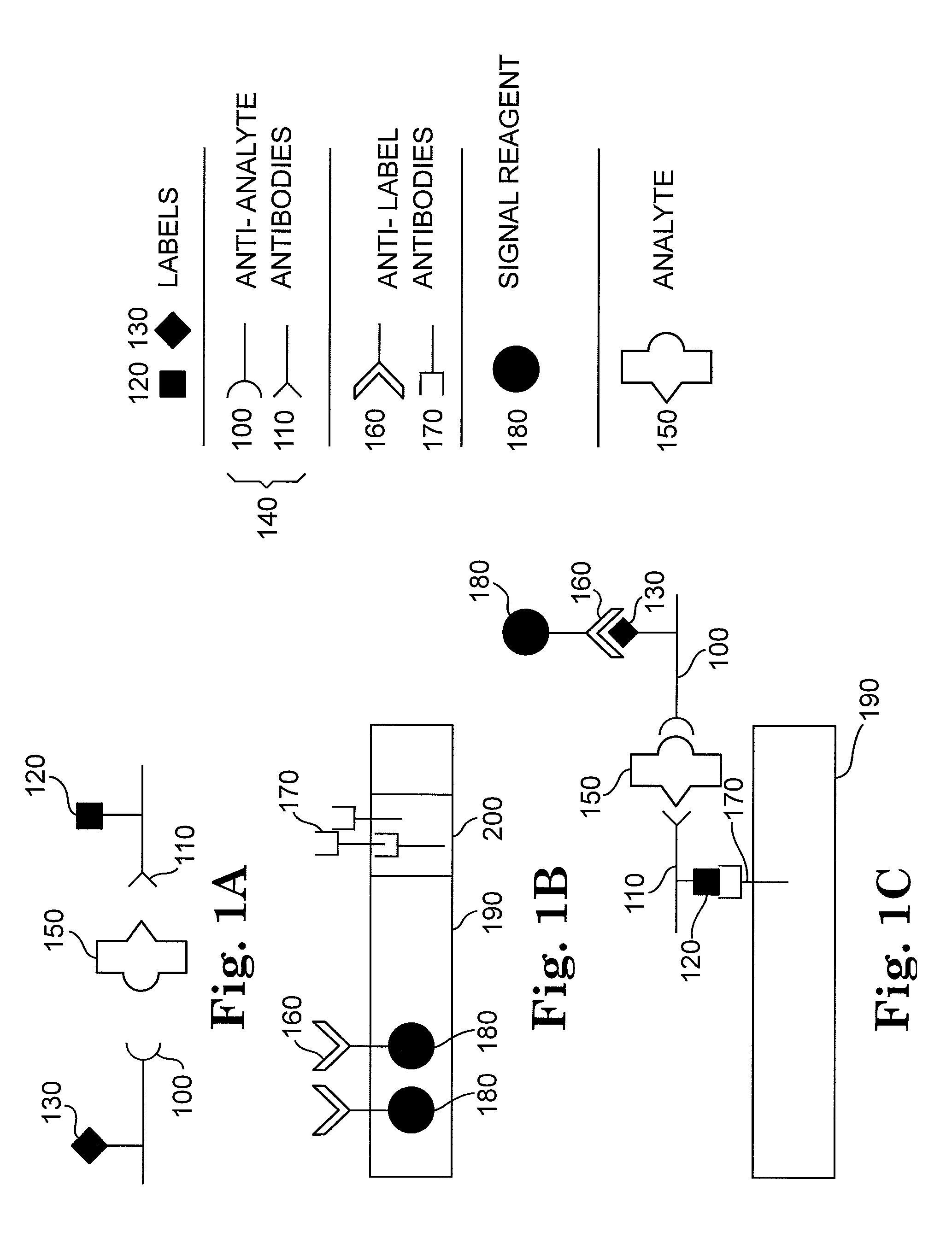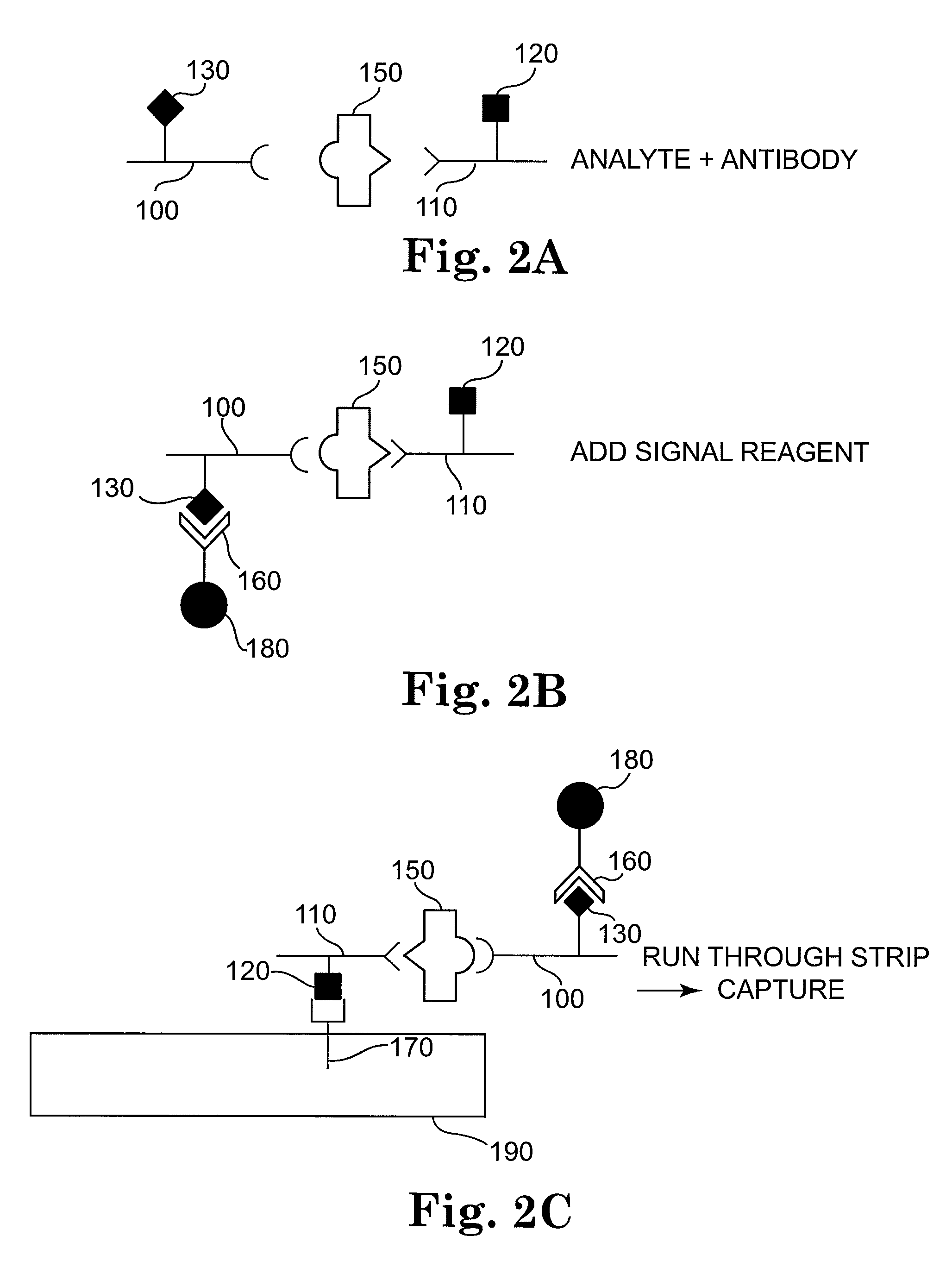Chromatographic test strips for one or more analytes
a technology analytes, applied in the field of chromatographic test strips for one or more analytes, can solve the problems of increasing problems, decreasing probability, and antibodies being necessarily bound to the surface, and achieve the effect of rapid assay time and ease of us
- Summary
- Abstract
- Description
- Claims
- Application Information
AI Technical Summary
Benefits of technology
Problems solved by technology
Method used
Image
Examples
example 1
Detection of a Single Analyte with a Double-Label System
[0137]The following example describes the detection of the bacterium Escherichia coli in aqueous samples. The presence of E. coli in liquids such as drinking water or fruit juice can be used as an indication of potential toxicity and inadequate disinfection processes. The assay described here is using two anti-E. coli antibodies, each coupled to a different label, and an immunochromatographic test strip. In this example, one label is biotin and the other label is a small molecule—the antibiotic streptomycin. The label-binding molecules are streptavidin and a monoclonal antibody to streptomycin.
[0138]Production of labelled anti-E. coli antibodies. Rabbits were immunized with heat-killed EC in complete Freund's adjuvant, followed by boosters with EC in incomplete Freund's adjuvant, according to previously described methods (E Harlow and D Lane, Antibodies: A Laboratory Manual (Cold Spring Harbor, N.Y.: CSHL Press, 1988)). Bleeds ...
example 2
Detection of a Single Analyte with a Single-Label System
[0144]The following example describes the detection of the bacterium Escherichia coli with a modification of the method of Example 1. In this example, a single-label system is used—streptomycin. The label-binding molecule is a monoclonal antibody to streptomycin. In this example, the signal particles are directly attached to the anti-E. coli polyclonal antiserum, which is contacted to the sample at the same time as the streptomycin-conjugated anti-E. coli polyclonal antiserum.
[0145]Production of labelled anti-E. coli antibodies. Anti-E. coli polyclonal antiserum and streptomycin-conjugated anti-E. coli polyclonal antiserum were produced as described in Example 1.
[0146]Production of signal particles. Colloidal gold sol was prepared as previously described (Beesley J (1989) “Colloidal Gold. A new perspective for cytochemical marking”. Royal Microscopical Society Handbook No 17. Oxford Science Publications. Oxford University Press...
example 3
Alternative for Detection of a Single Analyte with a Single-Label System
[0151]The following example describes the detection of the bacterium Escherichia coli with another modification of the method of Example 1. In this example, a single-label system is used—streptomycin. The label-binding molecule is a monoclonal antibody to streptomycin. In this example, the signal particles are directly attached to the monoclonal antibody to streptomycin, which is contacted to the sample at the same time as, or after, the contact the streptomycin-conjugated anti-E. coli polyclonal antiserum.
[0152]Production of labelled anti-E. coli antibodies. Anti-E. coli polyclonal antiserum and streptomycin-conjugated anti-E. coli polyclonal antiserum were produced as described in Example 1.
[0153]Production of signal particles. Colloidal gold sol was prepared as previously described (Beesley J (1989) “Colloidal Gold. A new perspective for cytochemical marking”. Royal Microscopical Society Handbook No 17. Oxfor...
PUM
| Property | Measurement | Unit |
|---|---|---|
| thickness | aaaaa | aaaaa |
| pH | aaaaa | aaaaa |
| composition | aaaaa | aaaaa |
Abstract
Description
Claims
Application Information
 Login to View More
Login to View More - R&D
- Intellectual Property
- Life Sciences
- Materials
- Tech Scout
- Unparalleled Data Quality
- Higher Quality Content
- 60% Fewer Hallucinations
Browse by: Latest US Patents, China's latest patents, Technical Efficacy Thesaurus, Application Domain, Technology Topic, Popular Technical Reports.
© 2025 PatSnap. All rights reserved.Legal|Privacy policy|Modern Slavery Act Transparency Statement|Sitemap|About US| Contact US: help@patsnap.com



